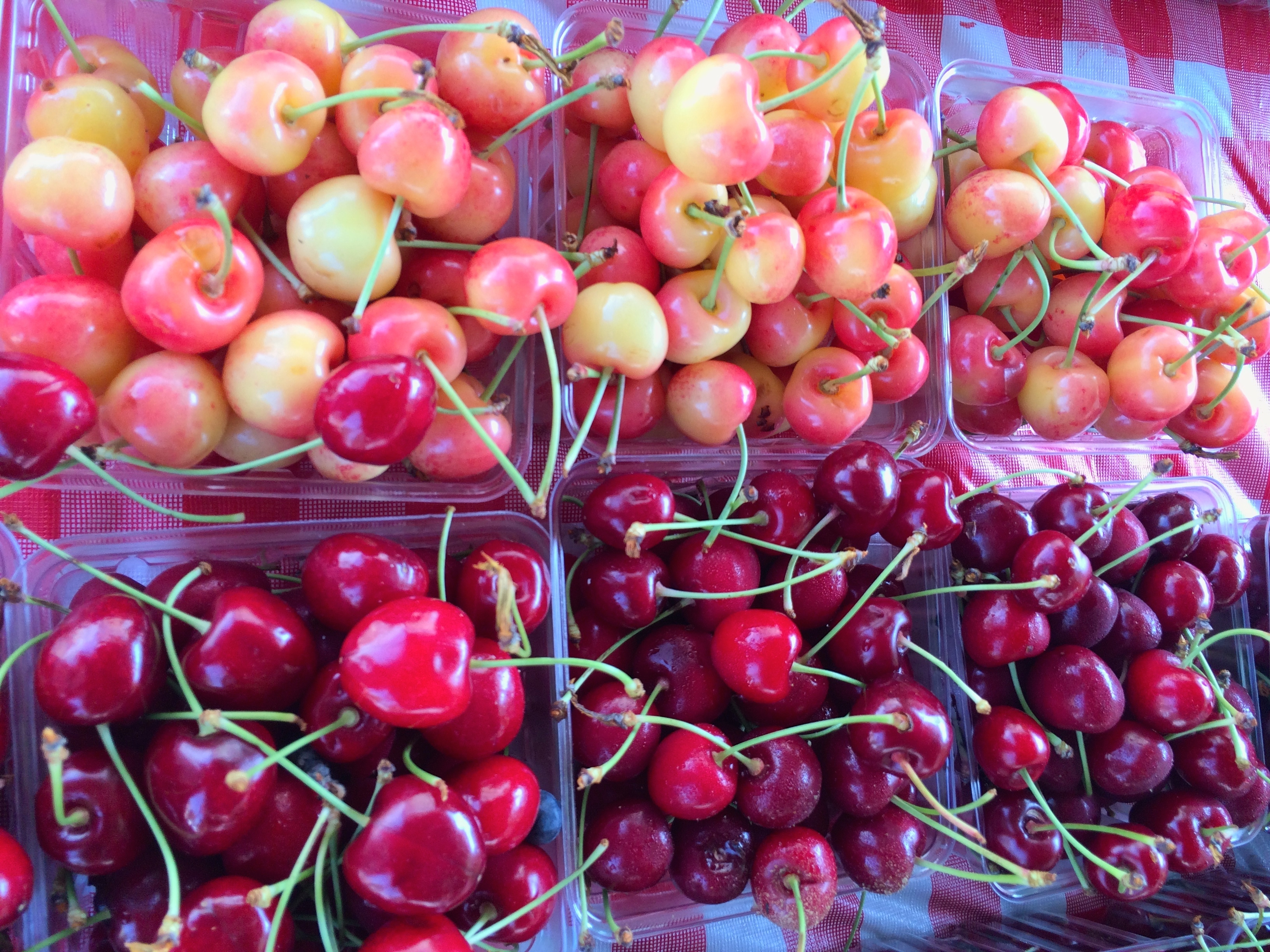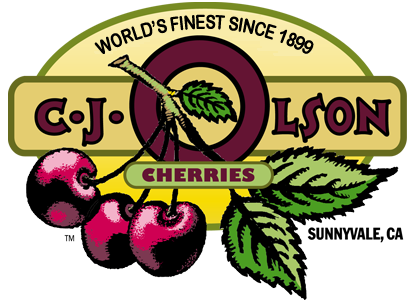Olson’s fruit stand a slice of Sunnyvale’s past

As Deborah Olson tells it, lightning ripped through the sky in Sunnyvale on Labor Day 1999 as construction crews bulldozed her family’s cherry orchard, a 16-acre farm that had stood on the corner of El Camino Real and Mathilda Avenue since 1919. After the heavy equipment was finished, all that remained was a fruit stand, a water tower and a few cherry trees.
“It was quite a sad day,” said Olson, fourth generation cherry grower. “A customer said the heavens were angry and shot down the lightning, scorning that the orchards went down.” Deborah’s father, Charlie Olson, was convinced it was Lester Tikvica, an old farmer, who sent down the lightning. Whatever the cause, “It was poignant,” said Olson.
Today, if you drive past the farm’s former location, you’ll find a P.F. Chang’s China Bistro, a Border’s, a Starbucks and a 300-unit apartment complex.
But amid the new development, you can still find C.J. Olson’s fruit stand, which has served as a reminder of Sunnyvale’s rich agricultural history since Deborah’s grandparents, Charlie and Rosie Olson, opened the stand in 1933.
The Olson’s fruit stand serves as a stark contrast to the surrounding chain stores. “Ours is different,” said Olson of the fruit stand she grew up in and now manages. “To do that in this day and age is difficult to pull off.”
This year, the fruit stand underwent a major renovation. It was bulldozed in January and reopened on June 8, about a month after the start of cherry season in California. Though the building is brand new, the Olsons kept a few architectural features from the old stand, including the wood trusses and the cherry painted water tower.
Most importantly though, the cherry stand is in the same location. That way,
the generations of customers who have been coming to Olson’s can find it among the new housing and shopping complexes.
“I fought really hard to keep the fruit stand where it was. I wanted to make sure we remained where we were because that’s where we were,” Olson said. “A lot of people helped us get this accomplished,” from the Sunnyvale city council to family friend and architect, Joe Bellomo of Palo Alto.
Though dying trees, poor growing seasons and the urbanization of Sunnyvale forced the Olsons to tear down their orchards and lease their land to a development company, they are still farming. They currently lease 13 acres from the city of Sunnyvale, located just back of the original orchard, where they farm three acres of cherry trees and 10 acres of apricot trees.
“We love farming. We’ve been doing this all our lives. To stop that would make a huge void in our lives. I can’t imagine my father not farming,” Olson said.
Nor can she imagine herself not carrying on the family’s tradition. “It was always clear to me. I knew I was going to continue doing this,” said Olson, whose love for cherries is evident from her dangling cherry earrings to her sporty cherry socks.
“Out of all the fruits, cherries really stand out. Cherries evoke happiness and bring back a lot of childhood memories,” Olson said.
This is certainly true for Olson, who spent her summers with her grandma Rosie at the fruit stand. When Olson was a baby, Grandma Rosie would use a blanket to transform a cherry box into a bed. And when she was a teenager, Deborah’s father put up a cot in the back of the packing shed for his daughter to nap.
During the many long summer days Olson spent cutting ‘cots and hand-packing cherries, she learned every nuance of the fruit business. She also garnered an appreciation of Santa Clara’s rich bounty of fruit, an education that serves her well as the current chairman of the marketing committee of the California Cherry Board.
Having long been known as the “valley of heart’s delight,” Santa Clara’s “rich fertile soil and microclimate produces the best cherries and apricots,” Olson declared.
That’s why Olson turns to neighboring farmers to supplement her harvest and keep up with customer demands for Olson’s cherries. When the California cherry season ends in late June, Olson turns to growers in the Northwest, whose season runs to the end of August. And during the winter months, Olson travels to Chile where they harvest cherries from Thanksgiving to mid-January.
That means fresh cherries are available at Olson’s fruit stand and via mail order eight months out of the year.
“I’m very picky and have a high quality standard. I just seek out the best cherries available,” Olson said.
And you’ll pay for it. Cherry prices are based on a fluctuating market price, but the range is $3-$8 per pound, depending on the time of year and quality. They also take Web and phone orders for three-, six- and 10-pound boxes.
Culinary icons such as Julia Child, Martha Stewart and Jacques Pepin are loyal customers. Stewart orders Olson’s cherries every other week for parties and photo shoots and Pepin cooks with them on his PBS specials. This month’s issue of San Francisco magazine lists Olson’s cherries as one of the best 125 things to eat in the Bay Area.
Of course, Olson sells more than just cherries and apricots at the fruit stand. There are cherry pies, chocolate covered apricots, dried Medjool dates, chocolate dipping sauce, pastel chocolate covered blueberries, tart cherry juice concentrate and “Deborah’s Fruit Cookbook,” which is full of family recipes.
Olson also sells other fresh fruit, such as tree-ripened white nectarines and plums, which she hand selects three times a week at the San Francisco produce market.
Like the other products she sells, Olson makes sure there are always samples of each different fruit variety. That way, customers can see how flavorful the peaches are or if they prefer the taste of a Crenshaw melon to a Sharlyn melon.
Because customers get to taste the fruit beforehand, “People will take five or 10 of something instead of one or two,” Olson said. “I love to hear customers tell me it’s a fun.


